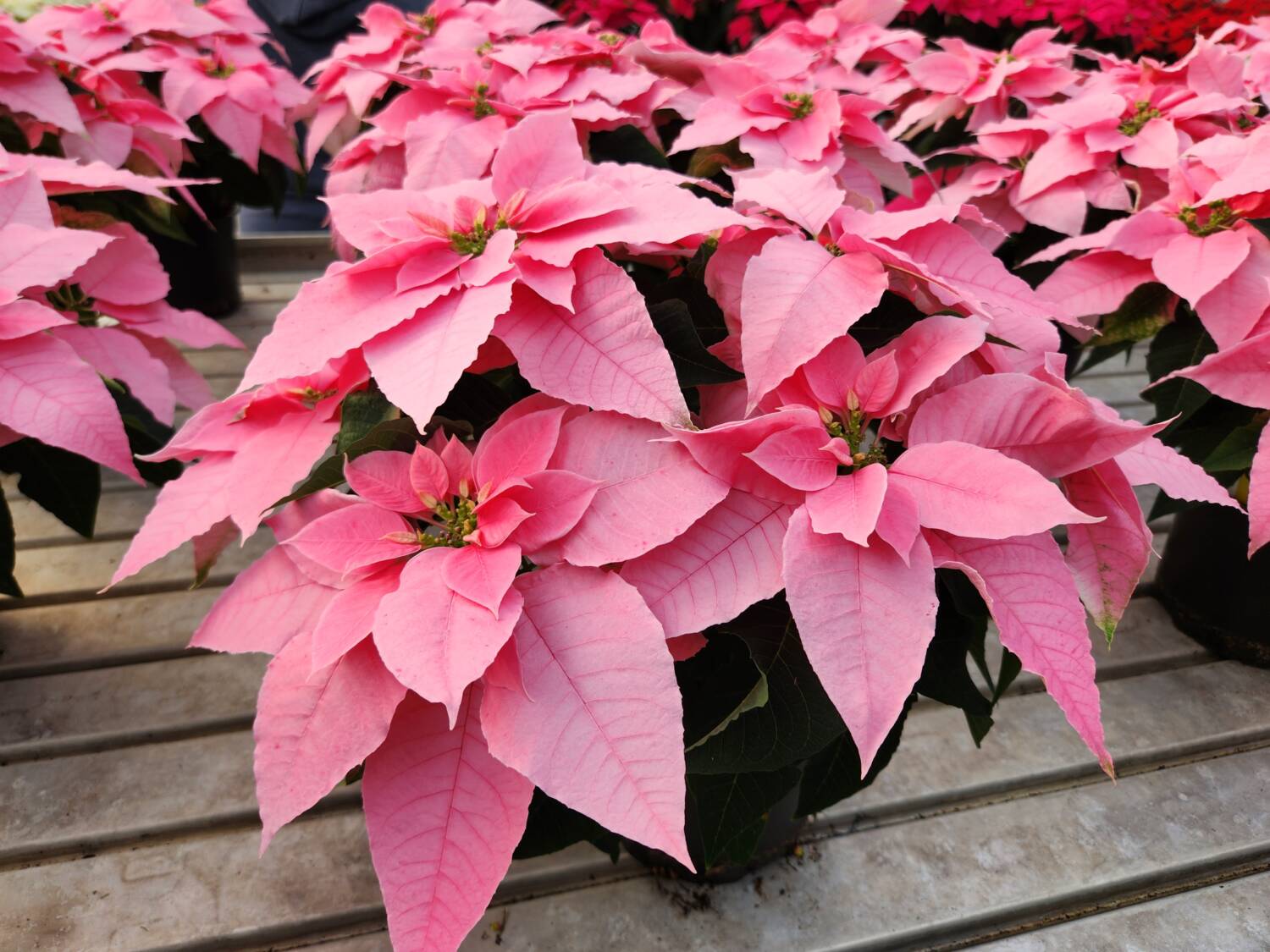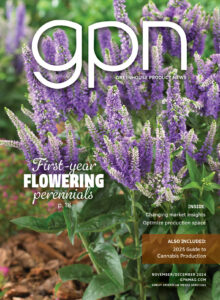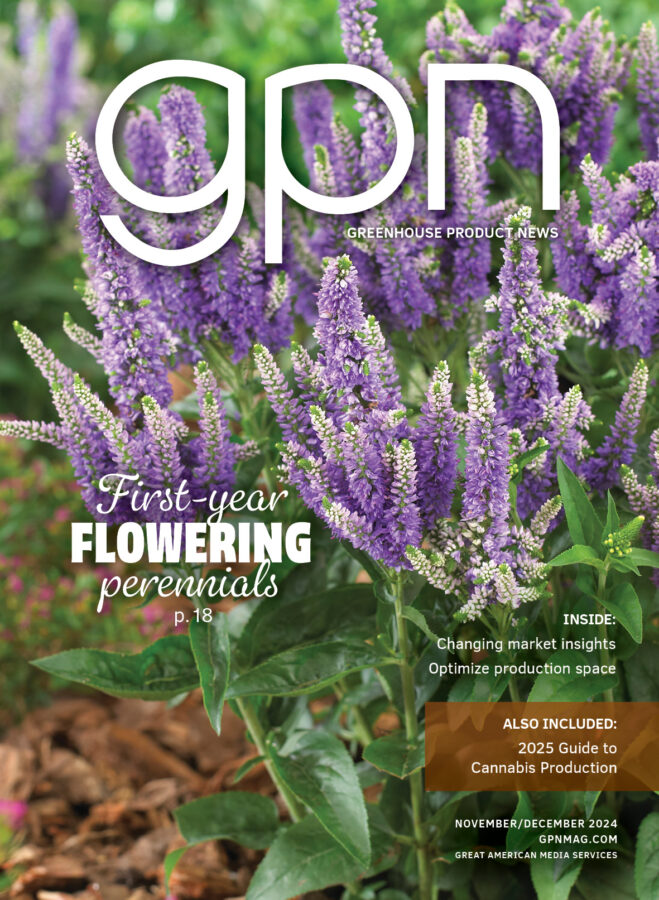
Sparkling new Princettia varieties
Princettia euphorbias have found their place as fashionable novelties in growers’ poinsettia portfolios. Fitting the early market window, they kick off the season with vibrant pinks and the whitest white.
Plants are naturally compact and well-branched, creating a centerpiece look that lends itself to combination planters and color bowls. The series is uniform, making it easy to mix and match colors and schedule production. A bonus for Southern growers is the resistance to heat delay, as Princettia thrive in warmer conditions.
Two new varieties that captured attention and awards in last year’s poinsettia trials are ‘Princettia Sparkling Rouge’ and ‘Princettia Sparkling Rosé’. They are the first of this class of euphorbia hybrids to have a splashy pattern and match the classic compact assortment.
Growers now have two red choices in the compact varieties. ‘Princettia Pure Red’ is a more vibrant red with red cyathia. The current ‘Princettia Red’ is more cranberry in tone.
‘Princettia Queen Pink’ has caught on for growers who like the vibrant color but would like a larger size. Three new Queen-sized beauties are Rose Punch, Hot Pink and Shell Pink.

PRINCETTIA PRODUCTION
Compared to traditional poinsettias, Princettia is easier to grow with less height, disease and pest management. It’s most applicable for 4- to 6.5-inch pot production and 2-inch minis, along with bowls and pans. Princettia Queen is recommended for 6.5- to 8-inch pots.
Timing schedule is similar to poinsettia. Varieties have a stronger root system that establishes quickly. Princettia also has a long sales window and is easily timed, being photoperiod responsive.
GROWING ON
Liners should be potted within 2 days of receiving and the plug should be placed at the same level as the growing media. Avoid stem contact with the soil for best results.
Growing media should have a pH of 5.8-6.3 and a target soil EC of 1.5. High porosity is essential (75%-85%) for pore space. This creates space for air, water and oxygen.
A starter EC of 1.5-2.0 is desirable.
FLOWER INITIATION AND DEVELOPMENT
The first stage of flowering begins 5-7 days after the critical day length is reached (12 hours). Flower development is the time from flower initiation to pollen shed. This period is 7-8 weeks.
Plants color early with a long peak and hold late. Natural season is mid- to late November, depending on the location. Lighting is required for late crops through night interruption or day length extension.

PINCHING
The timing of pinching depends on several factors including:
1.Desired number of nodes on the stem
2.Scheduled start date of short days
3.Root establishment.
For the desired number of flower heads on the finished plant, in general:
- 4-inch crop, leave 4-5 nodes
- 6-inch crop, leave 5-8 nodes below the pinch
- The number of nodes above 8 will not be viable, as a large amount of space will be required between the plants. Princettia is very free branching. Plants tend to over branch. More branches mean smaller overall bract size. Keep in mind, this is a different look. The number of bracts desired plus one is plenty.
GROWING TEMPERATURES
For establishment of the crop after propagation, the day temperature should be 75° F-80° F and night temperature of 56° F-65° F. For the final finishing, day temperature of 70° F-75° F is best, with night temperature between 65° F-78° F.
MANAGING GROWTH
Except for the Princettia Queen series, all Princettia varieties are naturally compact and mounding. Maintain adequate space to achieve this form. Minimal to no PGRs are required but are recommended in small doses to help even the growth. Growers can use Cycocel after pinching to even things up. Northern growers have found success with Cycocel at rates of 750-1,250 ppm.

PESTS AND DISEASES
Monitor and control pests and diseases typical for poinsettia production. Fungus gnat control is critical in the beginning. Water management plays a role. Princettia has a stronger root system, but constant inspection is recommended. Apply fungicides as needed. Botrytis can be a risk near or at harvest, especially on very ripe plants postharvest.
SECRETS OF SUCCESS
Pay attention to water, fertility and temperatures. Princettia is a more compact, low-vigor plant. Plants will use less water than standard poinsettias. The trick is to maintain adequate fertility to promote maximum growth.
For maximum bract expansion, maintain warm temperatures through finish. Do not grow Princettia as a cool crop.


 Video Library
Video Library 



















